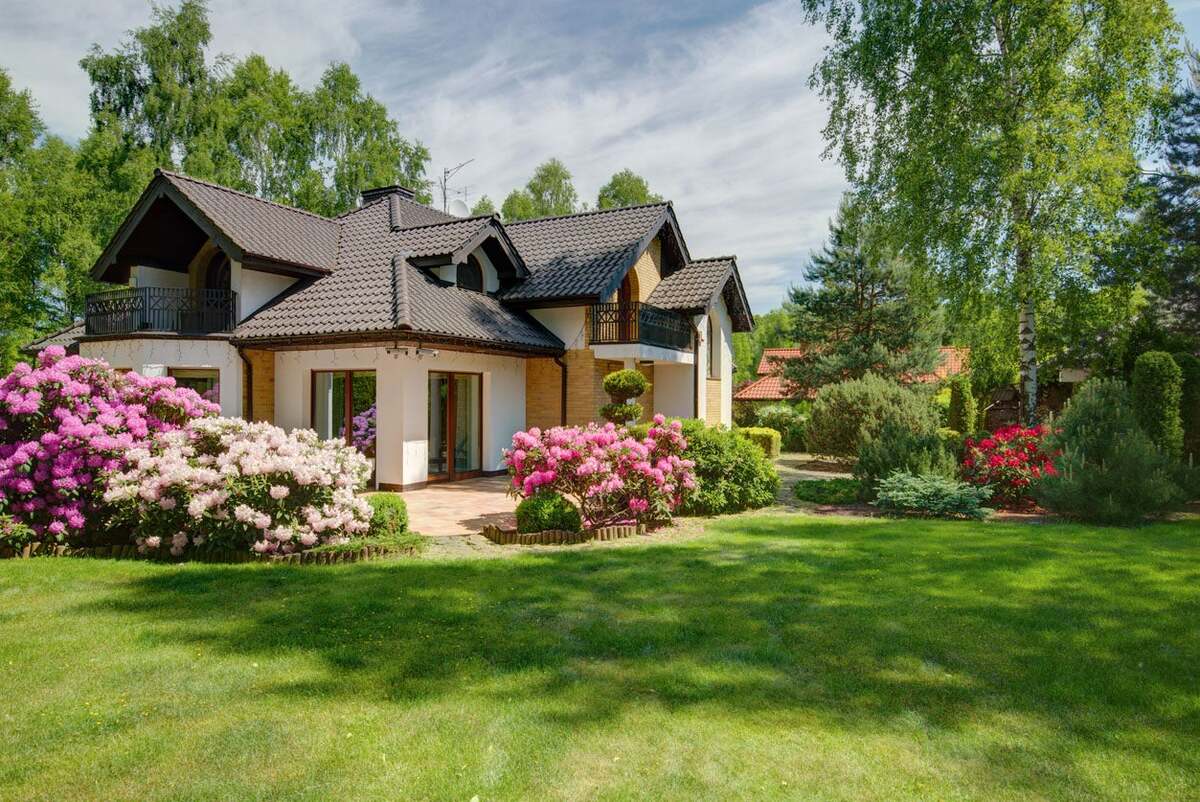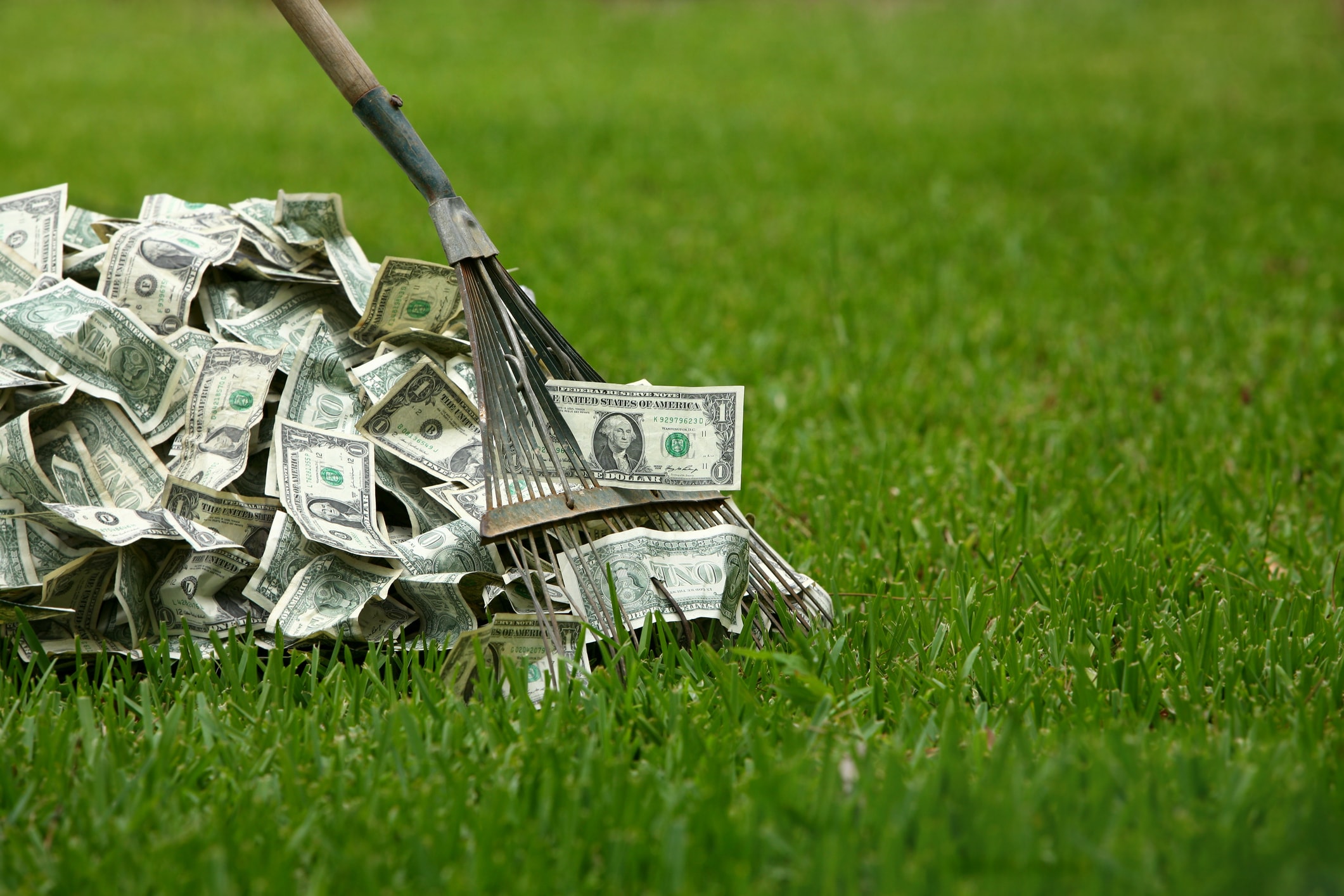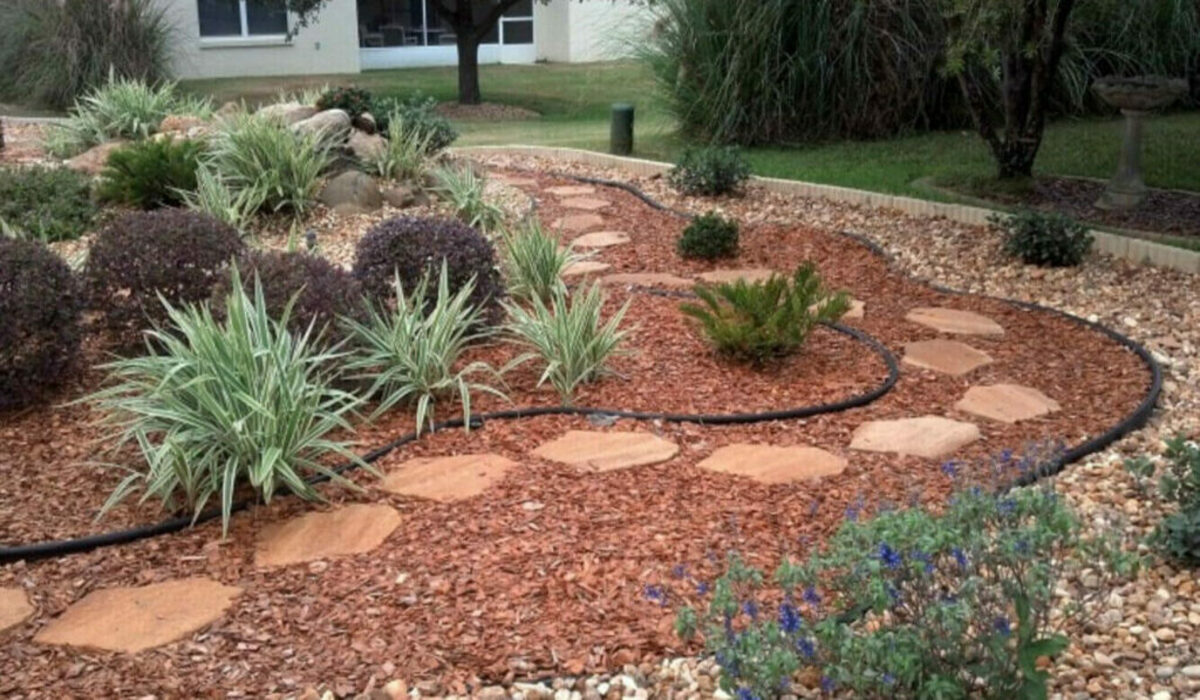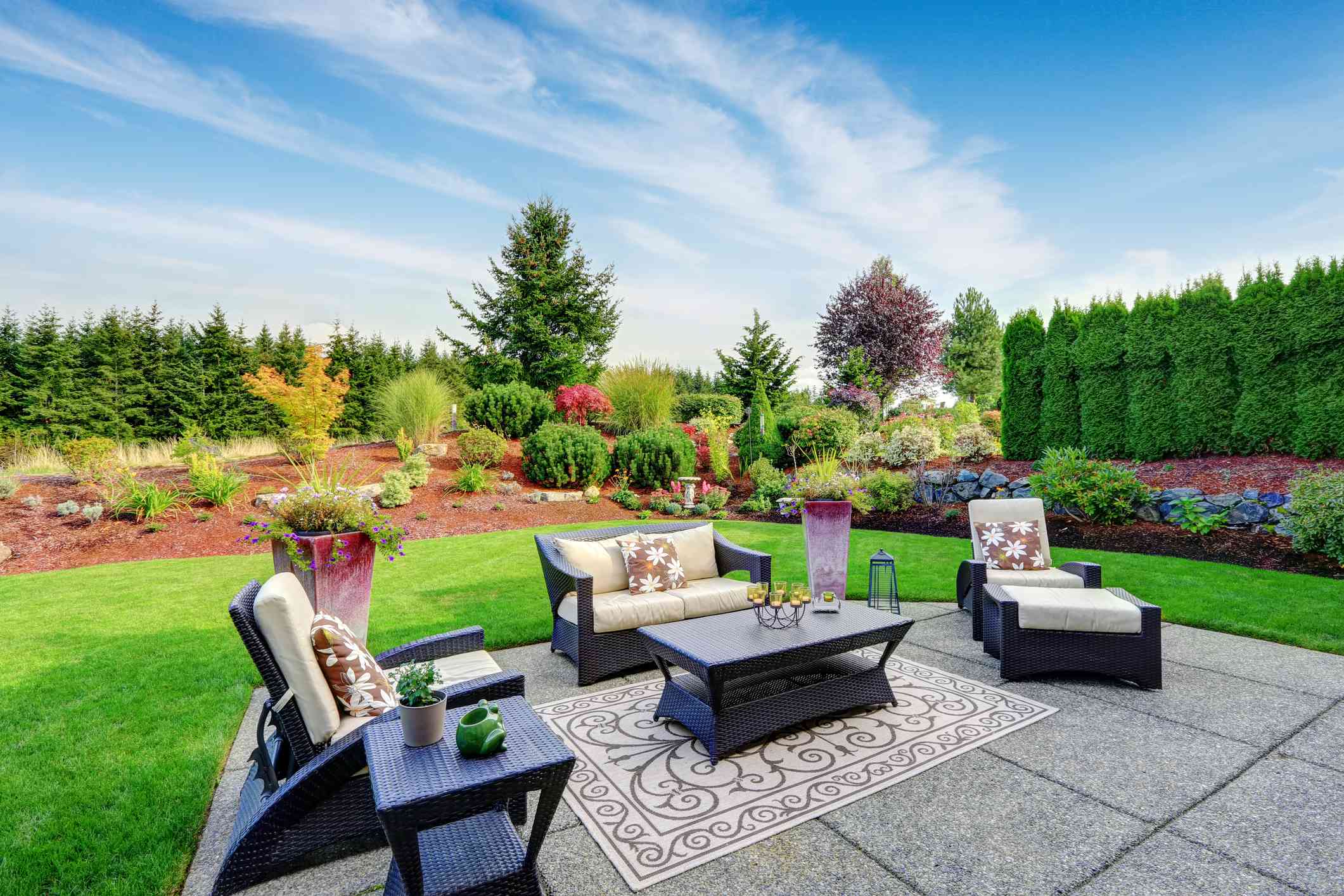Home>Garden Design>Planning Your Garden>How Much For Landscaping Design


Planning Your Garden
How Much For Landscaping Design
Modified: February 3, 2024
Discover the cost of landscaping design services and get expert tips for planning your garden. Create a beautiful outdoor space with our help!
(Many of the links in this article redirect to a specific reviewed product. Your purchase of these products through affiliate links helps to generate commission for Chicagolandgardening.com, at no extra cost. Learn more)
Table of Contents
Introduction
When it comes to planning your garden, designing a beautiful and functional outdoor space can be an exciting and rewarding project. A well-designed garden adds value to your property, provides a relaxing retreat, and enhances the overall aesthetics of your home.
However, before diving into the world of landscaping design, it’s important to understand the factors to consider, such as your budget, desired features, and the level of professional help you may need. By carefully considering these factors, you can create a garden that not only meets your needs but also fits within your budget.
Budgeting plays a crucial role in the planning process, as it determines the extent of the landscaping work and helps you prioritize your garden elements. It’s important to have a clear understanding of your financial limitations and establish a realistic budget for your project.
Once you have established a budget, you can then determine the costs associated with different landscaping elements. From hardscaping features like patios and walkways to softscaping elements like plants and flowers, each component will have its own cost considerations.
Deciding whether to hire a professional landscape designer or tackle the project yourself is another important consideration. While hiring a professional can ensure a high-quality design, it may come at a higher cost. On the other hand, taking the DIY route can save money but may require a significant amount of time and effort.
In this article, we will explore the factors to consider when planning your garden, how to budget for landscaping design, the cost estimations for different landscaping elements, the pros and cons of hiring a professional versus doing it yourself, and tips for saving money on your landscaping project.
By understanding the various aspects of landscaping design and making informed decisions, you can create a beautiful garden that reflects your personal style, suits your lifestyle, and provides a wonderful outdoor space for years to come.
Factors to Consider
Planning and designing a garden involves considering several key factors to ensure a successful outcome. By taking these factors into account, you can create a garden that not only looks beautiful but also meets your functional and lifestyle needs. Here are some important factors to consider when planning your garden:
- Climate and Location: Take into account your climate zone and the specific conditions of your location. Consider factors such as sunlight exposure, wind patterns, and rainfall. This will help determine the types of plants that will thrive in your garden and inform your design choices.
- Site Analysis: Assess your garden site to understand its topography, soil quality, existing plants or structures, and any potential limitations. Understanding these factors will help you make informed decisions about layout, drainage, and plant selection.
- Functionality: Determine how you intend to use your garden. Do you want an area for relaxation and entertainment, or do you need space for children to play? Consider your lifestyle and prioritize features that will enhance your daily activities.
- Style and Aesthetics: Think about the overall style and theme you want to achieve in your garden. Whether you prefer a formal, modern, or natural landscape, your design choices should reflect your personal taste and complement your home’s architecture.
- Maintenance: Consider the level of maintenance you are willing to undertake. Some plants and features require more upkeep than others. If you have limited time or gardening experience, opt for low-maintenance options that still provide visual appeal.
- Budget: Determine your budget for the landscaping project. This will help guide your decision-making process and ensure that you can realistically achieve your garden goals within your financial means.
By carefully considering these factors, you can create a garden design that is not only aesthetically pleasing but also functional, sustainable, and well-suited to your unique circumstances. Keep in mind that proper planning and attention to detail will yield the best results and ensure that your garden becomes a cherished oasis for years to come.
Budgeting for Landscaping Design
Setting a budget for your landscaping design project is an essential step in ensuring that your vision for your garden aligns with your financial capabilities. By establishing a budget upfront, you can prioritize your spending and make informed decisions about the features and elements you want to include. Here are some tips for effective budgeting:
- Research: Start by researching the average costs of landscaping materials, plants, and labor in your area. This will give you a general idea of what to expect and help you set a realistic budget.
- Identify Priorities: Determine the key elements you want to include in your garden and prioritize them based on their importance to you. This will help you allocate your budget accordingly and ensure that the most important features are included.
- Allocate Funds: Divide your budget into different categories based on the estimated costs of each aspect of the landscaping project. This can include categories such as hardscaping (e.g., pathways, patio), softscaping (e.g., plants, flowers), and irrigation systems. Allocate an appropriate amount of funds to each category.
- Consider Long-Term Costs: While it’s important to focus on the immediate costs of your landscaping project, also consider the long-term expenses. Take into account the maintenance costs for plants, irrigation systems, and any ongoing services that may be required.
- Be Flexible: It’s essential to be flexible with your budget as unexpected expenses may arise. Keep a contingency fund for any unforeseen costs or changes in the design plan.
Remember, a well-planned budget ensures that you can enjoy your garden without financial stress or exceeding your means. It allows you to make informed choices, prioritize your spending, and achieve the best possible outcome for your landscaping design project.
Determining Design Costs
When it comes to landscaping design, the costs can vary greatly depending on the scope and complexity of the project. Determining the design costs involves considering various factors and elements that contribute to the overall expense. Here are some key factors to help you estimate the design costs for your garden:
- Size and Complexity: The size of your garden and the complexity of the design will play a significant role in determining the costs. Larger gardens or intricate designs may require more materials, labor, and planning, which can increase the overall expense.
- Hardscaping Features: Hardscaping elements such as patios, decks, retaining walls, and pathways can significantly impact the design costs. The choice of materials, size, and intricacy of these features will contribute to the overall expense.
- Softscaping Elements: Softscaping refers to the use of plants, trees, flowers, and other living elements in your garden. The costs will depend on the types of plants you choose, the quantity needed, and whether they are mature or require time to grow.
- Irrigation Systems: Installing an irrigation system to ensure proper watering and maintenance of your plants is another factor to consider. The complexity and size of the system, as well as the type of technology used, will affect the design costs.
- Outdoor Structures: If you plan to include outdoor structures like pergolas, gazebos, or outdoor kitchens in your design, these will add to the expenses. The materials, customizations, and intricacy of the structures will impact the overall costs.
It’s important to note that each garden design is unique, and the costs will vary based on individual preferences and requirements. To get an accurate estimate, consult with professional landscape designers who can provide a detailed breakdown of the costs based on your specific design ideas and the materials and services involved.
By understanding the various elements that contribute to the design costs, you can plan your budget effectively and make informed decisions about the features and elements you want to include in your garden.
Cost Estimations for Different Landscaping Elements
Cost estimations for different landscaping elements can vary depending on factors such as materials, size, complexity, and regional pricing. While it’s important to consult with professionals for accurate quotes, here’s a general overview of the cost range for common landscaping elements:
- Hardscaping Features: Hardscaping elements like patios, pathways, and retaining walls typically range from $10 to $50 per square foot, depending on the materials used. Natural stone or concrete pavers tend to be more expensive, while gravel or concrete may be more cost-effective options.
- Softscaping Elements: The cost of plants, trees, and flowers can vary greatly depending on their size and type. Small perennials and annual flowers may range from $1 to $20 each, while larger trees and shrubs can range from $50 to several hundred dollars each.
- Irrigation Systems: Installing an irrigation system can range from $1,500 to $5,000 or more, depending on the size of the garden and the complexity of the system. Drip irrigation or sprinkler systems with automation features may be more expensive.
- Outdoor Structures: The cost of outdoor structures like pergolas, gazebos, or outdoor kitchens can vary significantly based on the materials used, size, and customizations. Basic structures may start around $3,000, while more elaborate or customized options can go well beyond $10,000.
- Lighting: Adding outdoor lighting to enhance the ambiance of your garden can range from $500 to $3,000, depending on the number of lights, their type (solar or wired), and the complexity of the installation.
- Maintenance: It’s important to budget for ongoing maintenance expenses. Regular lawn care, pruning, and fertilizing services can range from $50 to $200 per visit, depending on the size of the garden and the services required.
Keep in mind that these are rough estimations, and actual costs may vary based on your location, materials chosen, and other specific factors. Consulting with professional landscape designers or contractors will provide you with accurate and detailed cost estimations based on your specific project requirements.
By having an understanding of the estimated costs for different landscaping elements, you can plan your budget accordingly and prioritize the features that best align with your vision and financial capabilities.
Hiring a Professional Landscape Designer
Deciding whether to hire a professional landscape designer for your project is an important consideration that can greatly impact the outcome of your garden design. While taking the DIY route may seem enticing for cost-saving purposes, there are several benefits to enlisting the expertise of a professional. Here are some reasons why hiring a professional landscape designer is worth considering:
- Expertise and Experience: A professional landscape designer brings a wealth of knowledge and experience to the table. They are well-versed in design principles, plant selection, and construction techniques, which can ensure that your garden is aesthetically pleasing and functional. They can offer creative solutions tailored to your specific needs and make the most out of your available space.
- Design Planning and Implementation: Designing a garden involves more than just selecting plants and arranging them. A professional landscape designer will develop a comprehensive plan that takes into account your preferences, budget, and site conditions. They will oversee the implementation process, coordinating with contractors and ensuring that the design is executed precisely.
- Selection of Quality Materials: Landscape designers have extensive knowledge of various materials available in the market. They can guide you in selecting high-quality materials that are durable, sustainable, and suitable for your specific design requirements.
- Saves Time and Effort: Designing and implementing a garden can be a time-consuming and physically demanding task. By hiring a professional, you can save precious time and effort. They will handle the logistics, manage the project timeline, and take care of the labor-intensive tasks, allowing you to focus on enjoying your garden.
- Long-Term Value: A well-designed and professionally executed garden can significantly increase the value of your property. A professional landscape designer understands the elements that add long-term value and can help create a garden that enhances the overall aesthetics and appeal of your home.
- Access to Network of Contractors: Landscape designers often have a network of trusted contractors and suppliers. This can streamline the process of finding reliable professionals to execute various aspects of the project and ensure a smooth and successful implementation.
While hiring a professional landscape designer may come at a higher cost compared to doing it yourself, their expertise, experience, and ability to deliver outstanding results make it a worthwhile investment. They can bring your vision to life, create a functional and beautiful garden, and save you time and stress in the process.
DIY Landscaping vs. Professional Services
When it comes to landscaping your garden, you have the option to take on the project yourself or hire professional services. Each approach has its advantages and considerations, and it’s important to weigh them carefully before making a decision. Here is a comparison between DIY landscaping and hiring professional services:
- Cost Considerations: DIY landscaping is often seen as a cost-saving option as you can avoid labor and design fees. However, it’s essential to consider the hidden costs of DIY, such as the need to purchase or rent equipment, buying materials, and potential mistakes that may require expensive fixes. Hiring professionals may have a higher upfront cost, but they can offer expert guidance and ensure efficient use of resources.
- Expertise and Knowledge: Professional landscapers have extensive knowledge of design principles, plant selection, and construction techniques. They possess the expertise to transform your ideas into a well-designed and functional outdoor space. DIY landscaping requires you to research and educate yourself, which can be time-consuming and may lead to less optimal results.
- Time and Effort: Landscaping projects, especially larger ones, can be time-consuming and physically demanding. DIY landscaping requires a significant investment of time and effort. Hiring professionals frees up your time and allows you to focus on other priorities while ensuring that the project is completed efficiently and expertly.
- Creative Vision: DIY landscaping can provide you with the opportunity to exercise your creativity and personal touch. You have complete control over the design, allowing you to express your style and preferences. On the other hand, professional landscapers can bring fresh ideas and expertise to the table, offering unique perspectives and design solutions that you may not have considered.
- Quality and Longevity: Professional landscapers have access to high-quality materials and know how to ensure the longevity and durability of your garden features. Their experience allows them to anticipate and mitigate potential issues or mistakes that could compromise the quality of the project. DIY projects may have a higher risk of errors and may not have the same level of craftsmanship and longevity.
- Liability and Insurance: When you hire professional landscapers, they often carry liability insurance, protecting you and your property in case of accidents or damages during the project. This alleviates potential financial and legal burdens that DIY projects might impose.
Ultimately, the decision between DIY landscaping and hiring professional services depends on your budget, time availability, expertise, and personal preferences. While DIY landscaping can be a fulfilling and cost-saving option for small projects or those with ample time and skills, hiring professionals can deliver expertise, efficiency, and high-quality results, especially for larger or more complex projects.
Tips for Saving Money on Landscaping Design
Landscaping design doesn’t have to break the bank. By implementing smart strategies and making thoughtful decisions, you can create a beautiful garden while keeping costs under control. Here are some tips for saving money on landscaping design:
- Plan Ahead: Taking the time to plan your garden design thoroughly can help you avoid costly mistakes. Determine your budget, prioritize features, and do thorough research on materials and plants. This will prevent unnecessary expenses and ensure a more efficient use of your resources.
- Start Small: If you’re on a tight budget, consider starting with a small section of your garden and gradually expanding over time. This allows you to allocate your budget more effectively and make adjustments or additions as needed.
- Choose Cost-Effective Materials: Opt for cost-effective materials that still offer durability and visual appeal. For example, consider using composite decking instead of expensive hardwood, or opt for gravel pathways instead of costly pavers. Do your research and explore more affordable options without compromising quality.
- Reuse and Recycle: Look for opportunities to reuse or repurpose materials in your landscaping design. For example, old bricks or stones can be used to create a rustic pathway or border. By repurposing materials, you can save money and add a unique touch to your garden.
- DIY where Possible: Take on some tasks yourself to reduce labor costs. Simple tasks like planting flowers, mulching, or basic maintenance can be done by homeowners, saving money on hiring professionals for every aspect of the project. However, be realistic about your abilities and consider hiring professionals for more complex or specialized tasks.
- Consider Perennial Plants: Choose perennial plants that come back year after year instead of annuals that require replanting each season. Perennials offer long-term cost savings as they require less maintenance and reduce the need to purchase new plants every year.
- Propagate Plants: Instead of buying new plants, learn propagation techniques to multiply your existing plants. This allows you to create more greenery for your garden without the additional expense.
- Shop Local Sales: Take advantage of local sales and discounts when purchasing plants, materials, or garden accessories. Nurseries often have end-of-season sales, which can help you save money on plants and supplies.
- Maintain Proper Plant Care: Implement proper maintenance practices to ensure the health and longevity of your plants. This includes watering efficiently, pruning regularly, and providing appropriate fertilization. Taking care of your plants properly reduces the need for replacements, saving you money in the long run.
- Consider Long-Term Savings: When making decisions about your garden design, consider the long-term costs and savings. For example, investing in an efficient irrigation system can save water and reduce utility costs over time. Similarly, choosing native plants that are well-suited to your climate can be more cost-effective in terms of water usage and maintenance.
By following these tips and being strategic in your approach to landscaping design, you can achieve a beautiful and functional garden without breaking the bank. Remember, creativity, research, and thoughtful planning are key to saving money while creating a stunning outdoor space.
Conclusion
Planning and designing your garden can be an exciting and fulfilling endeavor. By considering important factors such as climate, functionality, and budget, you can create a garden that not only meets your needs but also reflects your personal style and enhances the overall appeal of your property.
Budgeting for landscaping design is crucial in ensuring that your project stays within your financial means. By researching costs, identifying priorities, and allocating funds effectively, you can make informed decisions and achieve the garden of your dreams without overspending.
Understanding the costs associated with different landscaping elements allows you to plan and budget accordingly. Whether it’s hardscaping features, softscaping elements, or outdoor structures, having a clear estimation of costs helps you make informed choices and select materials that suit your design vision and budget constraints.
When deciding between DIY landscaping and hiring professional services, weigh the benefits and considerations carefully. While DIY may save money, professional landscape designers bring expertise, creativity, and efficiency to the table, ensuring a high-quality result that adds value to your property.
To save money on landscaping design, be strategic. Plan ahead, start small, consider cost-effective materials, and take on DIY tasks where feasible. Reuse and recycle materials, propagate plants, and shop for discounts. Long-term savings can be gained by implementing efficient irrigation systems, choosing native plants, and practicing proper plant care.
By incorporating these tips and strategies, you can create a beautiful garden that fits your budget and brings joy for years to come. Whether you choose to embark on the journey of DIY landscaping or opt for professional services, remember to enjoy the process and let your creativity flourish in crafting your outdoor oasis.










